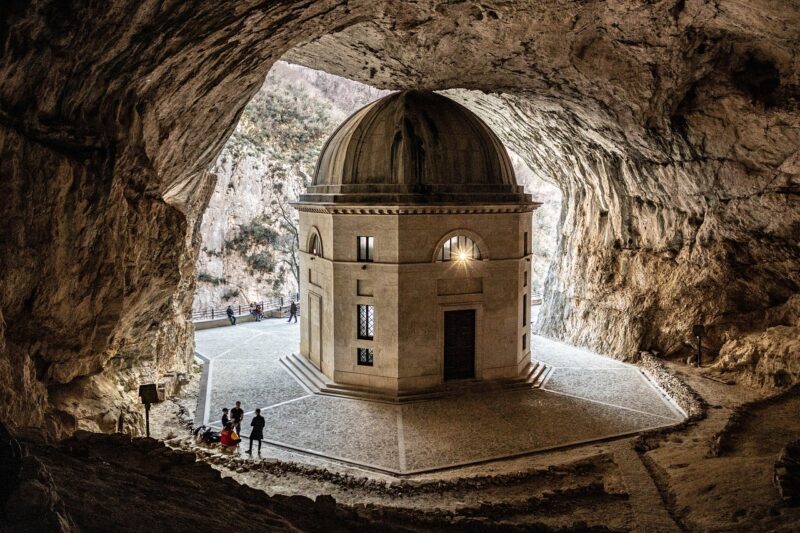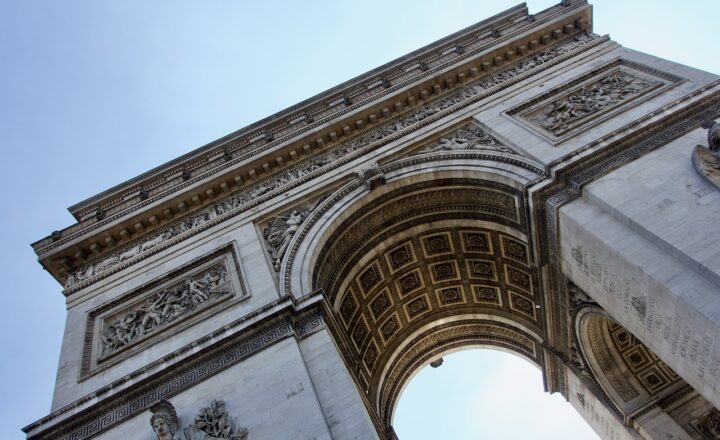
The relationship between celestial phenomena and earthbound structures has fascinated humanity for centuries. Among the various structures that exhibit this profound connection, temples stand out as significant representations of cultural, religious, and astronomical knowledge. This article delves into the intricate ways in which star alignments have influenced the construction of majestic temples across different cultures and epochs.
1. The Spiritual Significance of Stars in Ancient Civilizations
Since the dawn of civilization, humans have looked to the skies, witnessing the cycles of the sun, moon, and stars. For ancient people, these celestial bodies were not merely astronomical entities, but sacred symbols imbued with spiritual significance. Many cultures believed that these heavenly bodies had a direct impact on earthly events, including agriculture, warfare, and architecture.
In Egyptian civilization, for instance, the three main pyramids of Giza are aligned with the three stars in Orion’s Belt, showcasing a strong correlation between celestial phenomena and architectural design. Similarly, Indigenous cultures across the Americas crafted structures that reflected a deep connection with the cosmos, utilizing star alignments for both navigation and spiritual practices.
2. Alignments and Orientation of Temples
Temples have been deliberately oriented to align with specific astronomical events, including solstices and equinoxes. This construction methodology is evident in various ancient cultures.
- Stonehenge (England): Predating written history, Stonehenge is a prehistoric monument whose layout is meticulously designed to align with the sun’s trajectory during solstices. Visitors gather each year to witness the sunrise on the summer solstice, illuminating the inner stones of the structure.
- Temple of Kukulcan (Chichen Itza, Mexico): Also known as El Castillo, this pyramid is not only architecturally magnificent but also functions as an astronomical calendar. During the spring and autumn equinoxes, shadows create the illusion of a serpent slithering down the pyramid’s steps, symbolizing the descent of the feathered serpent deity, Kukulcan.
- The Parthenon (Greece): The Parthenon, dedicated to the goddess Athena, is oriented in relation to the rising and setting sun. The architectural elements were inherently designed to reflect light in a way that embodied the divine.
These strategic alignments facilitate important rituals, affirming the bond between the divine and the temporal realms.
3. Astronomical Tools Used in Temple Construction
Astronomy was an integral part of temple construction, influencing architects and builders in their pursuit of precision. Various tools aided these ancient civilizations in aligning their structures:
- Gnomon: A simple device used in sundials, the gnomon helped ancient peoples track the movement of the sun and determine the time of year. This tool assisted builders in maintaining accurate orientations for temples.
- The Armillary Sphere: Used by the Greeks and later cultures, the armillary sphere is a model of celestial objects, allowing astronomers to visualize the position of stars and planets in the sky to determine alignments for construction purposes.
- Water Levels and Levels: Simple leveling tools utilizing water enabled builders to create perfectly horizontal surfaces — an essential requirement for celestial alignment.
Utilizing such tools not only affirmed their astronomical knowledge but also reinforced the belief that their structures honored divine connection and celestial guidance.
4. Cultural Reflections in Temple Architecture
The interplay between star alignments and cultural beliefs is particularly evident in temple architecture. Temples served not only as places of worship but also as repositories of societal values and narratives.
For example:
- Hindu Temples (India): Many Hindu temples are oriented according to cardinal directions, aligning with constellations significant to various deities. The sacred mountain Meru is often symbolically represented, signaling the cosmic axis around which the universe revolves.
- Ziggurats (Mesopotamia): These massive structures were built to connect heaven and earth, and their heights symbolized an ascent towards the divine. The celestial alignments defined their architectural orientation, indicating the importance of both religion and astronomy in Mesopotamian culture.
- Mesoamerican Pyramids (e.g., Teotihuacan): The architectural design of Mesoamerican pyramids aligns with astronomical events. The Pyramid of the Sun, for instance, aligns with both the sun’s movements and the surrounding landscape, inferring their society’s reverence for celestial phenomena.
These cultural reflections illuminate the ways in which ancient peoples sought to symbolize their connection to the cosmos through the intentional design of their sacred spaces.
5. The Legacy of Celestial Architecture in Modern Times
While ancient temples showcase an awe-inspiring legacy, the influence of star alignments in architecture continues to resonate today. Contemporary architects often draw inspiration from ancient practices, incorporating astronomical knowledge into modern designs:
- Modern Observatories: Purposefully constructed to maximize visibility of celestial events, contemporary observatories are designed with astronomical alignments, enhancing the effectiveness of observational practices.
- Sustainable Architecture: Many modern builders align structures with natural light sources and celestial patterns—an approach that emphasizes energy efficiency and a harmonious relationship with the environment.
- Cultural Centers: Some contemporary buildings are designed with celestial alignments in mind, merging modern architecture with ancient wisdom to align with the cosmic, such as the large windcatchers in space-efficient designs of cultural centers in the Middle East.
These modern interpretations serve as a reminder that the cosmic continuum remains integral to architectural identity, bridging past and present.
Conclusion
The construction of temples influenced by star alignments showcases the profound relationship between humanity and the cosmos. Whether through orientation, cultural reflection, or the application of astronomical tools, these structures embody the essence of ancient civilizations’ beliefs and aspirations.
As we continue to explore the great mysteries of the universe, understanding the celestial influences on architecture enhances our appreciation for the ingenuity and spirituality that define human existence across time and space. The legacies of these magnificent temples not only reflect religious devotion but also serve as a testament to humanity’s ever-evolving relationship with the stars above.
Reflecting on this deep-rooted connection prompts us to ponder our position in the cosmic landscape as we stand beneath the same stars that guided ancient architects in creating their sacred spaces.







